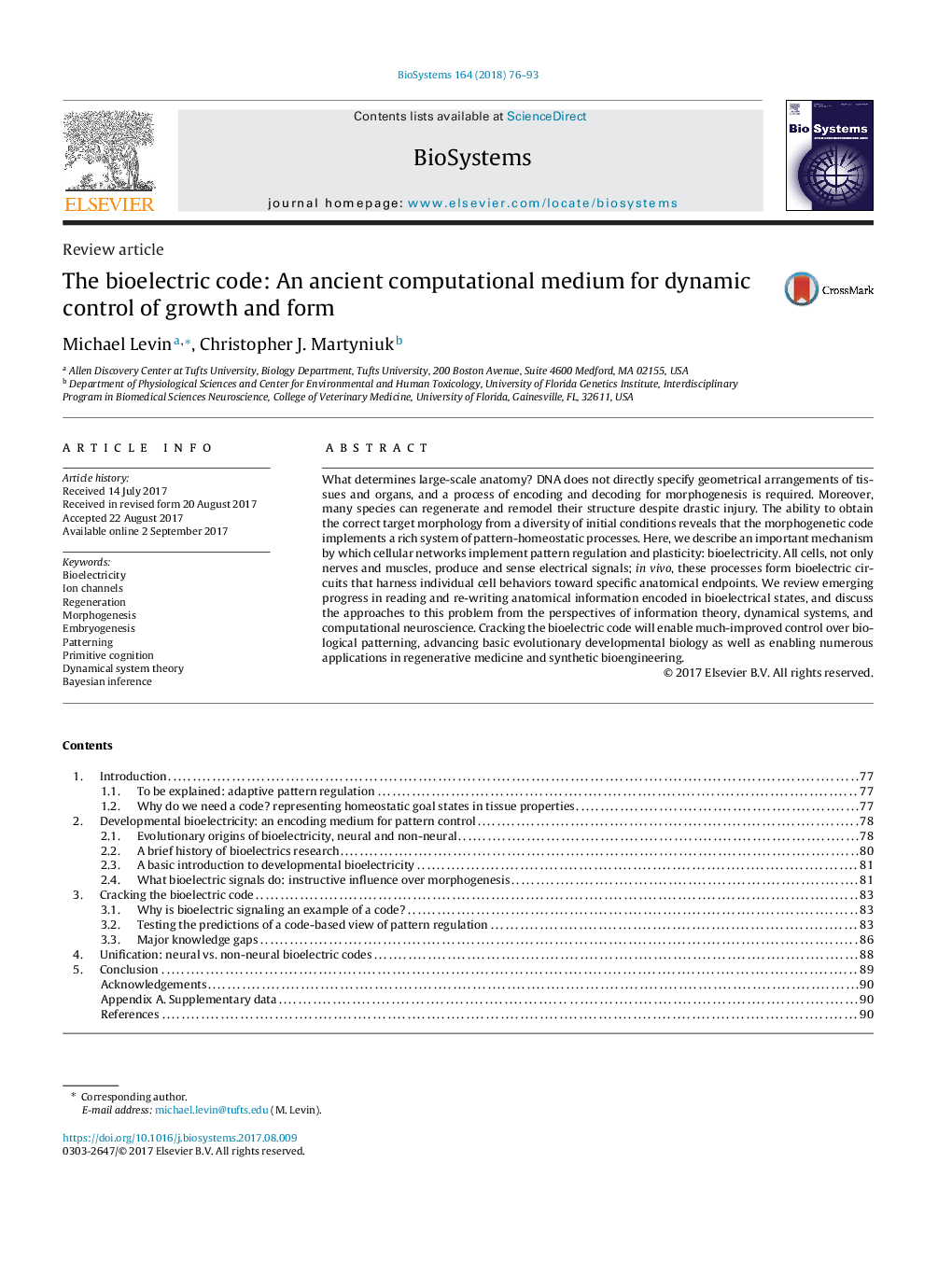| Article ID | Journal | Published Year | Pages | File Type |
|---|---|---|---|---|
| 8406603 | Biosystems | 2018 | 18 Pages |
Abstract
What determines large-scale anatomy? DNA does not directly specify geometrical arrangements of tissues and organs, and a process of encoding and decoding for morphogenesis is required. Moreover, many species can regenerate and remodel their structure despite drastic injury. The ability to obtain the correct target morphology from a diversity of initial conditions reveals that the morphogenetic code implements a rich system of pattern-homeostatic processes. Here, we describe an important mechanism by which cellular networks implement pattern regulation and plasticity: bioelectricity. All cells, not only nerves and muscles, produce and sense electrical signals; in vivo, these processes form bioelectric circuits that harness individual cell behaviors toward specific anatomical endpoints. We review emerging progress in reading and re-writing anatomical information encoded in bioelectrical states, and discuss the approaches to this problem from the perspectives of information theory, dynamical systems, and computational neuroscience. Cracking the bioelectric code will enable much-improved control over biological patterning, advancing basic evolutionary developmental biology as well as enabling numerous applications in regenerative medicine and synthetic bioengineering.
Keywords
Related Topics
Physical Sciences and Engineering
Mathematics
Modelling and Simulation
Authors
Michael Levin, Christopher J. Martyniuk,
